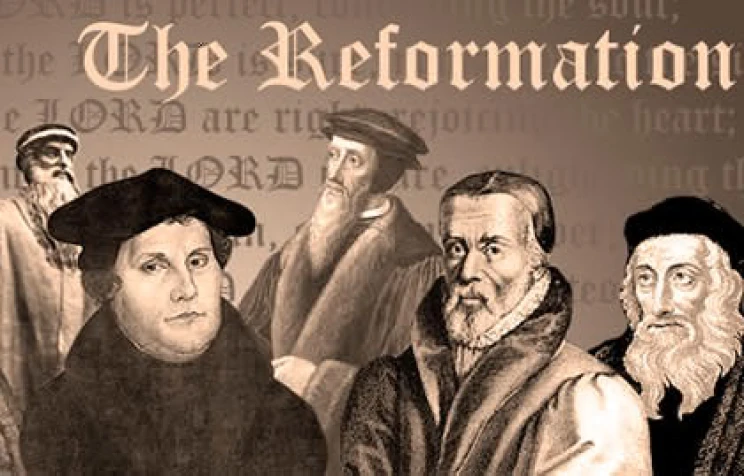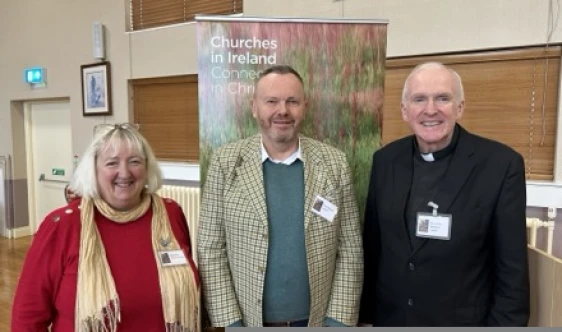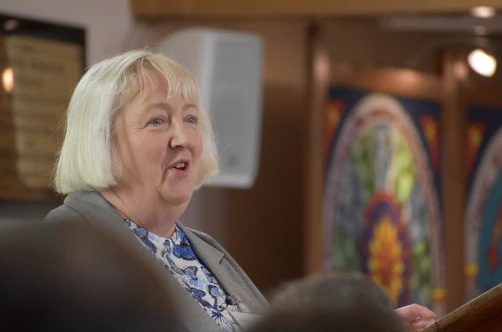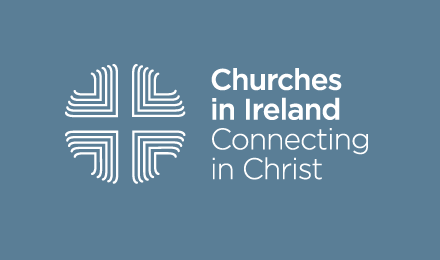
Aspects of the Reformation: Defining moments in the life of Martin Luther
In the third of a series of weekly blog posts, ICC President, the Rt Rev John McDowell, discusses key events in the life of Martin Luther.
Luther’s life and habits were very parochial. He was born in Eisleben in Saxony and, although he very rarely returned there after leaving as a boy, by a strange chance he died there too. He was brought up in the mining town of Mansfeld seven miles to the North of Eisleben, went to University in Erfurt forty–five miles to the South and spent the rest of his life in Wittenberg fifty miles to the north.
He only once ventured out of the boundaries of the Holy Roman Empire (which in his day was largely German) when he visited Rome. He didn’t like Rome and it nourished his intolerance of everything that wasn’t German. He was able to travel widely in Saxony but after 1521 not much further as he was under an Imperial ban and depended on the Electors of Saxony for protection. In the last few years of his life he was further confined by poor health and relied on a little cart even to take him to church to preach. However, he developed a wide range of correspondents, usually clergymen whose appointments he had arranged and whose careers he had furthered, so he got news from all over Europe and occasionally from England, but his contacts there were very mixed and he had very little interest in English affairs.
The outlines of his biography are easily told. His childhood was unremarkable; except that he came form a mining area which was unusual for someone who went on to be a scholar. Like Calvin, Luther’s parents intended him for the law, a profession that his father thought would help protect his mining interests. But to his father’s great displeasure in 1505 at the age of 20 he have up his legal studies and entered the Augustinian monastery at Erfurt. The superior there was a man called Johann von Staupitz who greatly influenced Luther (although he did not follow Luther when he broke with Rome ). Staupitz was one of the founders of a new University in a remote country town called Wittenberg and he persuaded Luther to move there to study theology and to take a doctorate. Luther became a fairly senior Augustinian monk responsible for the discipline and studies of eleven monasteries and also succeeded Staupitz as a senior University administrator.
Then, in 1517, the 95 Theses burst on the world.
The theses did not contain a full theological programme and need not have portended the break with Rome. As we would say today, Luther was radicalised by the bitterness of the opposition he encountered, and the arguments and attacks of others made him develop his theology and pursue his ideas further. The Reformation in Germany emerged through a series of disputations with his antagonists at Heidelburg, Leipzig and Augsburg. By this time Luther was well aware that the punishment for heresy would be burning at the stake and that if he was imprisoned and tried by the Church he would likely lose his life. This meant that his theology was formed under the double pressure of the increasingly aggressive arguments of his opponents and the threat of martyrdom.
In 1521 Luther, now well known throughout Germany, was called upon to answer to the Emperor at the Diet of Worms in front of all the important men of the entire empire (from Germany, parts of Eastern Europe, Spain, Italy and the Netherlands which included what is now Holland and Belgium). Many thought he would not take the risk of attending, but as he said, nothing would stop him, even if he had known “there were as many devils as tiles on the roofs”. The courage he showed at Worms was truly breathtaking. For a commoner to stand up to the Emperor and all the nobility of the Empire and to resist the might of the Church was as extraordinary as it was unforgettable. A defining event, it probably did more to win people over to the Reformation, and shape their hopes than did his theology (which was accessible to very few people at this stage).
The Diet concluded with the Emperors emphatic condemnation and on the way back from Worms, now in mortal danger, Luther was kidnapped on the instructions of his ruler and protector Frederick the Wise and taken for his own safety to the safety of the Wartburg Castle, where he spent the next ten months in exile, writing furiously and (believe it or not) translating the whole of the New Testament into German.
In the meantime the Reformation at Wittenburg continued without him under the direction of Andreas Karlstadt. However it became increasingly radical, addressing issues of poverty and also questioning much conventional morality. When it was safe for Luther to appear again in public he returned to Wittenberg in March 1522 and immediately called for the reforms to be reversed because they had happened too fast. He also broke decisively with Karlstadt who had begun to take a very different line on the Lord’s Supper, arguing that Christ was not actually present in the bread and the wine, a view Luther passionately rejected.
This first split of the Reformation presages the future, for people began to take Luther’s theology and apply it, as they saw it, to their own experience — a process Luther might oppose but which he could not control. In towns and villages throughout the Empire people appointed preachers and destroyed images and paintings in Churches. Eventually this religious turbulence brought political revolution and in 1524 the Peasants’ War broke out — the greatest popular uprising to be seen in Europe until the French Revolution. At first Luther condemned both sides equally but in the end he sided with the authorities calling for the execution of the ringleaders, which indeed happened.
At the height of the Peasants’ War Luther decided to marry, “to spite the Devil” as he explained — surely one of the strangest justifications a new bridegroom ever gave. His bride was an ex–nun from a well–to–do family called Katherine von Bora. He was now a fairly well upholstered middle aged man but entered this new phase of his life with enthusiasm, soon becoming a father.
The last years of his life were dominated by increasingly futile attempts to heal the many divisions which had opened up within the broad movement of the Reformation, and although some agreements were patched together they didn’t hold, and after his death his own followers themselves split, each side passionately claiming his authority. Luther’s theology reflects his life and the changing political world around him. He was a man of immense charisma and it was his great friend and successor, recognised by Luther as the superior academic theologian, Philip Melanchthon who said that “his character is almost the greatest proof of his doctrine”.





